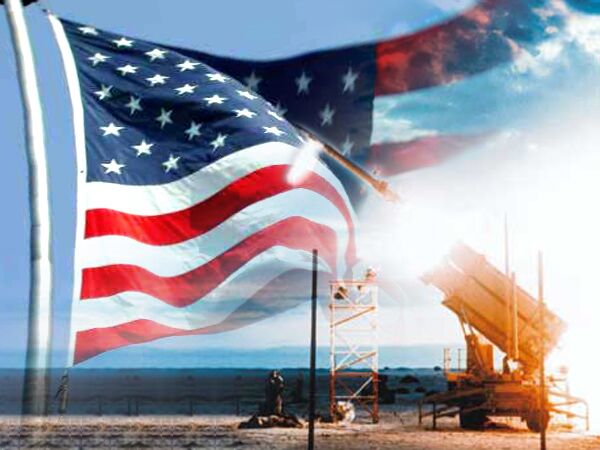Reference Note
The National Missile Defense (NMD) system is a type of missile defense which includes a military strategy and associated systems to shield the whole of the United States against incoming intercontinental ballistic missiles (ICBMs) that might be launched by the so-called rogue states, including North Korea, Iran, Syria and Libya.
However, U.S. proposals on establishing the NMD system are causing a mixed response in some countries. On March 18, 2009, the government of the Czech Republic temporarily withdrew treaties on hosting a U.S. defense radar from the parliament ratification process in the face of an opposition threat to vote them down.
In the mid-1960s, the Soviet Union and the United States tried unsuccessfully to conclude an Anti-Ballistic Missile Treaty on the limitation of the anti-ballistic missile (ABM) systems used in defending areas against missile-delivered nuclear weapons. The ABM Treaty was signed May 26, 1972 in Moscow.
Under the Treaty, Moscow and Washington agreed that each may have only two ABM deployment areas, so restricted and so located that they cannot provide a nationwide ABM defense or become the basis for developing one.
Under Article III of the Treaty, each party undertook “not to deploy ABM systems or their components except that within one ABM system deployment area having a radius of one hundred and fifty kilometers and centered on either party’s national capital.”
Each party was to deploy “no more than one hundred ABM launchers and no more than one hundred ABM interceptor missiles at launch sites within one ABM system deployment area having a radius of one hundred and fifty kilometers and containing ICBM silo launchers.”
Although the Treaty allowed either party to modernize or replace ABM systems or their components, the parties undertook “not to develop, test, or deploy ABM systems or components which are sea-based, air-based, space-based, or mobile land-based.”
On July 23, 1999, U.S. President Bill Clinton signed into law the “National Missile Defense Act of 1999” sponsored by Senator Thad Cochran (Republican Mississippi). The bill (H. R. 4) states, “It is the policy of the United States to deploy as soon as is technologically possible an effective [NMD] system capable of defending the territory of the United States against limited ballistic missile attack (whether accidental, unauthorized or deliberate).”
President George W. Bush who was elected in November 2000 repeatedly confirmed his administration’s intention to develop the NMD system despite resolute Russian objections.
In June 2002, the United States officially withdrew from the 1972 ABM Treaty.
The NMD system comprises theater-level missile defense and strategic missile defense systems for shielding the United States and its closest allies. The latter perceives medium-range missiles and ICBMs as the main threat.
The strategic missile defense system comprises three echelons. The ground echelon comprising two Boeing Ground Based Interceptor (GBI) deployment locations in Alaska and California has the greatest ICBM-intercept capabilities.
GBIs are directed toward their targets by a system of early warning radars, including those in Vardo, Norway, and Thule, Greenland.
In the next ten years, the ground echelon will receive a European missile defense system comprising GBI missiles and early warning radars.
RIM-161 Standard Missile 3 (SM-3) ship-based anti-ballistic missiles used by the Aegis Ballistic Missile Defense System are deployed aboard U.S. Navy destroyers and cruisers and make up the NMD system’s second echelon located near the territory of theoretical enemies. At present, an AEGIS-class warship task force is stationed in Japan.
The third echelon coordinates the operations of the first two echelons and comprises a cluster of early warning satellites. In the next ten to 20 years, the United States plans to deploy space-based missile interceptors and to develop production of unmanned combat aerial vehicles (UCAVs) and interceptor aircraft with laser weapons. These aircraft will patrol near the territory of theoretical enemies and intercept missiles in the boost phase.
On July 8, 2008, U.S. Secretary of State Condoleezza Rice and Czech Foreign Minister Karel Schwarzenberg signed the Ballistic Missile Defense Agreement in Prague.
On September 19, 2008, U.S. Secretary of Defense Robert Gates and Czech Defense Minister Vlasta Parkanova signed in London the Status of Forces Agreement (SOFA).
A 30-meter early warning radar will be built at Brdy base in Bohemia and commissioned by 2014.
On August 20, 2008, US Secretary of State Condoleezza Rice and Poland’s Foreign Minister Radoslaw Sikorski signed in Warsaw the Agreement Between the Government of the United States of America and the Government of the Republic of Poland Concerning the Deployment of Ground-Based Ballistic Missile Defense Interceptors in the Territory of the Republic of Poland.
Under the agreement, the U.S. Army will deploy a battery of MIM-104 Patriot surface-to-air missile (SAM) systems starting in 2009. And a supporting force is to be deployed by 2012.
In September 2008, the U.S. Senate allocated $712 million for the European missile defense system in Poland and the Czech Republic, due to be spent in 2009.
NMD allocations are increasing steadily. Analysts say the United States will annually spend $8-$10 billion on the NMD program which will receive between $100 billion and $1 trillion by 2030.




